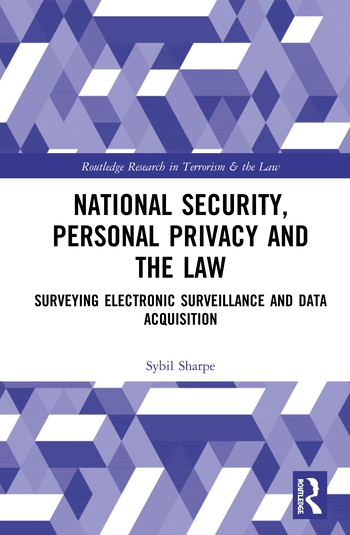High Tech Guarding: Is Security the Steamroller or the Road?
Once a new technology rolls over you, the adage goes, you’re either part of the steamroller or part of the road.
There has been a lot of tech rocking and rolling when it comes to security staff and their tasks of patrolling, protecting and reporting. In the past, technology used by a security officer was limited to a guard tour system device, a two-way radio, a flashlight and keys. Often there was limited communication and incident reporting was via paperwork and relied heavily on memory. Critical information was not shared effectively.
There is no disconnect for officers at Willis Tower, one of the world’s tallest buildings. They work smoothly with technology to deliver bottom line services from the 107th Floor on down. Keith Kambic, the tower’s director of security and life safety and earlier featured in Security magazine, realized a mindset change was needed after 9/11. His contracted service (AlliedBarton) “showed us that they could assist in controlling our costs, implement the newest in technology and place a greater emphasis on security officer training and customer service, too,” he says.
Security officers who welcome and manage visitors and contractors onto a site now have a number of options. Electronic access control systems often can include visitor management while firms such as EasyLobby specialize in standalone and access-integrated systems. There are solutions a security step higher than yesterday’s sign-in logs. In these applications, less costly, simple to use solutions are in the hands of security officers. Take, for example, visitor badging.
For example, incident reporting and task management lets security conduct configurable data collection, workflow and analysis, ensuring compliance, collaboration and permitting organizational convergence, according to Julie Copithorne of D3. The e-alerts enable individuals to open a configured form to report events. Data can trigger automatic notifications, alert responsible security professionals, and prompt human audits to escalate or archive events, she adds. And geofences can be set up to reflect officer patrols and assignments.
So it is no surprise that many schools opt for increasing use of security video.
A case in point: In California, the Redlands Unified School District serves the communities of Redlands, Loma Linda, Mentone, San Bernardino, Yucaipa and East Highland with 23 elementary, middle, and high schools, as well as the Redlands Independent Study Education school.
There has been a lot of tech rocking and rolling when it comes to security staff and their tasks of patrolling, protecting and reporting. In the past, technology used by a security officer was limited to a guard tour system device, a two-way radio, a flashlight and keys. Often there was limited communication and incident reporting was via paperwork and relied heavily on memory. Critical information was not shared effectively.
Over many years, single-focus watchmen have turned into multi-tasking security officers and their watchmen’s clocks – going back to the mid-19th Century, believe it or not – have turned into sophisticated guard tour and information analysis systems. It’s not uncommon to see an officer zipping around a parking lot on a Segway; forget the golf cart.
Two-way radios are now more powerful, more featured and more discrete thanks to a myriad of ear-wear accessories. Remember those sign-in books for visitor controls? Well, today’s improvements range from higher tech visitor badges to computer-based visitor management systems a welcoming officer uses.
And security video in ever-evolving applications now is a key guarding tool, augmenting or replacing a static or patrolling officer. Then there are those robots – call them unmanned guided vehicles, if you must – hoofing it around some facilities and equipped with more eyes and ears than Joe Officer.
Fitting into an Officer’s Hands
It seems every time a new techie gadget is introduced, someone tries to mold it or force it into the hands of a security officer. Joysticks. Touch screens. Is the iPad next? Apple’s Steve Jobs might think so when he said that “I’ve always wanted to own and control the primary technology in everything we do.”Still, no matter what the eye-popping guarding advance, enterprise security leaders must keep their focus on business goals including productivity gains and return on investment.
Robert Messemer, chief security officer at the Nielsen Company, the leading consumer research firm, agrees. “Our goal in the adoption of high technology is for our uniformed security personnel to have the most complete and up-to-date information from which to make timely decisions.” Messemer adds, “As unplanned critical incidents occur, senior executives trust the Nielsen security team to deliver them with new insights, enabling them to make better-informed decisions.”
But there is more to officer tech within enterprises. “Improvements in operational efficiency aside, the adoption of high technology can also bring about beneficial changes in organizational culture, including greater openness, transparency and collaboration across geo-political boundaries,” contends Messemer.
Avoid a Human, Technology Disconnection
Yet Drew Levine, president of G4S Secure Solutions cautions, that as many push towards enhancing technology, businesses are learning that just investing in technology is not enough. He often sees businesses that have spent significantly on technology, but there has been a disconnect with their security officers. It is imperative that it is all tied together, he notes.There is no disconnect for officers at Willis Tower, one of the world’s tallest buildings. They work smoothly with technology to deliver bottom line services from the 107th Floor on down. Keith Kambic, the tower’s director of security and life safety and earlier featured in Security magazine, realized a mindset change was needed after 9/11. His contracted service (AlliedBarton) “showed us that they could assist in controlling our costs, implement the newest in technology and place a greater emphasis on security officer training and customer service, too,” he says.
Security officers are cutting edge when it comes to situational awareness and the technologies that go with the emerging concept. IBM UK, with 26 British locations and a world-recognized brand that needed protecting, brought in technology from CNL, which created centralized command and control while integrating the whole physical security infrastructure across all locations. The resulting data is presented in an easy to use interface, ensuring only relevant data is displayed when required. In a related recent move, G4S Technology formed an integration partnership with CNL and its physical security information management or PSIM software.
Video plays a guarding role at isolated, remote sites where sometimes officers may conduct a visit once a week or never patrol because of the distant location.
For example, Walter Griesseier of American Iron & Metal, one of North America’s largest scrap metal operations, constantly fights theft and vandalism at such remote sites, including facilities in northern Quebec, Canada. Beyond guards, “at some sites, we have security video with remote monitoring from UCIT Online Security which acts as an officer to capture license plate information and with truckers assigned their own passwords,” says Griesseier.
Images now can more easily move right into the hands of officers today. G4S’s Levine says he sees a lot of investment going toward video. Often, the cameras are just sitting and recording with a central station operator in place, viewing 100-150 cameras, he says. More often than not, this defies what a human can do. Now, video analytics can move away from passive recording to actionable video. With the right communication tools in place (for example, sending screenshots to a security officer’s Secure Trax device) that officer can respond proactively, Levine notes. For businesses which invest in video but do not have the critical mass to spend for their own command and control center, a remote command and control center is a smart option, he says.
Two-Way Radios Continue to Evolve
Concerning communications, two-way radios remain an important tech tool for security officers although cellular and smart phones have a growing role. Such mobile radios today are high powered, simple to use, and are available as low-cost units in VHF and UHF frequencies and wattage with a number of conventional talk channels. According to Brandon Ocampo of Two Way Direct, in open field use, VHF will travel farther, while in buildings, UHF travels better. Its Blackbox units boast 16 channels.Security officers who welcome and manage visitors and contractors onto a site now have a number of options. Electronic access control systems often can include visitor management while firms such as EasyLobby specialize in standalone and access-integrated systems. There are solutions a security step higher than yesterday’s sign-in logs. In these applications, less costly, simple to use solutions are in the hands of security officers. Take, for example, visitor badging.
Robin Pratt, with office administration at the Doe Creek Middle School in New Palestine, Ind., uses peel-off badges from Data Management because of the solution’s ease of use and low expense. Her source recently expanded into tab-expiring visitor passes using a right fold-over tab to initiate a chemical process that causes the badge to change color over night. A red “VOID” shows the badge is no longer valid, preventing visitors from re-entering facilities without registering each day.
For others, higher tech handheld PCs, PDAs and smart phones are the thing. Especially for large corporate security operations, there is officer interfacing at different levels, notes Andrews International’s John Petruzzi.
To highlight the coming together of officers and new-age technology, Petruzzi’s firm partners with D3 Security Management Systems (D3) which enables a mix of manpower and technology to strengthen security while driving down overall costs through enterprise security management solutions. Officers collect data of certain types of events as a first step. “What it is all about is information and the ability to insert it into predictability models so that the chief security officer can pull data from any number of reports,” points out Petruzzi.
Reduce Cost, Improve Security
The endpoint: decreasing the physical footprint through broader security coverage that requires fewer uniformed guard hours, thus reducing costs while improving security.For example, incident reporting and task management lets security conduct configurable data collection, workflow and analysis, ensuring compliance, collaboration and permitting organizational convergence, according to Julie Copithorne of D3. The e-alerts enable individuals to open a configured form to report events. Data can trigger automatic notifications, alert responsible security professionals, and prompt human audits to escalate or archive events, she adds. And geofences can be set up to reflect officer patrols and assignments.
Whole cities are now extending the concept of putting more technology into the hands of officers on duty. In Chicago, for instance, IBM, Axis Communications, Genetec and Firetide are part of a master plan for the city’s Office of Emergency Management and Communications’ Operation Virtual Shield. At its heart, there are an estimated 15,000 security cameras on streets, in schools, within the transit system and including cameras at private office buildings and even around private homes. The system constantly evolves with added analytics, license plate recognition, trending projections and intelligent search capabilities to the existing infrastructure.
David Cullen of ISI Intelligence Security International knows that mobility of officers through higher level technology is growingly important for enterprises, government agencies and law enforcement. A majority of security officers today use security video and access controls, he notes, adding that handheld devices including iPhones now can run a variety of applications with information captured, logged and analyzed. So for some, it is more a question of when to invest in officer technology that complements a solid security plan.
Are the Robots Marching Forward
Is the ultimate future for security officers be robots and drones? There are continuing advances in patrol robots inside facilities and on the perimeter. Back in the late 1990s, companies such as Hitachi were assembling wheeled vehicles with sensors and cameras that could be programmed to follow a set route.More recently, a firm called MobileRobots put together a package called Seekur Jr. as reconnaissance scout with field swappable batteries, software architecture and tools that ease integration and programming. And thanks to their war-time success, future street, campus and port patrolling may be by drone or what the U.S. military calls unmanned aerial vehicles.
Levine says that he doesn’t think there will be robots or anything radical like that in the future. But he does believe there will clearly be an evolution in the technology that a security officer has at his or her fingertips. Performance will go up. Video will mature, he says.
He adds that security officers will be equipped with amazing technology to do their job. The advances in wireless and advanced video will allow them to do more with less. They will have the means to perform multiple functions: security, safety and facility. In the future, a CEO will perceive a security officer as a strategic part of his or her business.
Who’s Guarding the Schools?
School districts throughout the country face diverse threats from vandalism and theft to violence. At the same time, budget-strapped schools often depend on local law enforcement to provide officers on patrol inside buildings and around them. Often, only the largest districts can afford their own security officers.So it is no surprise that many schools opt for increasing use of security video.
A case in point: In California, the Redlands Unified School District serves the communities of Redlands, Loma Linda, Mentone, San Bernardino, Yucaipa and East Highland with 23 elementary, middle, and high schools, as well as the Redlands Independent Study Education school.
In an upgrade of the district’s network backbone, the school superintendent wanted to upgrade and expand the use of video surveillance to improve security for students, staff and visitors.
Redlands High School, the oldest high school in California, was the first location targeted for a new video surveillance system. David Massaro, coordinator of technology services for Redlands Unified and his team, requested bids for a high-quality IP video system. “We looked at a lot of different products, but the ones that caught my eye were the OnSSI software and the multi-megapixel camera technology,” he says. “We looked at several major IP camera manufacturers and we liked the 1.3 megapixel models from IQinVision.”
Through late 2009, two Redlands Unified School District high schools had deployed more than 100 IQeye HD megapixel cameras. Conduit Networks of Temecula, Calif., is the project integrator. The original 18-camera system was deemed a complete success, and it laid the groundwork for a much larger installation at Citrus Valley High School.
There, the District has installed 53 IQeye Sentinel cameras for exterior surveillance and 36 IQeye Alliance dome cameras to monitor the administrative offices, library, hallways, the security offices, and other key interior locations. The district is monitoring and recording video at the high schools at speeds ranging from 5 to 15 frames per second. Video is stored for 16 days, long enough for any incident to be reported and checked out, if it wasn’t observed real-time.
Looking for a reprint of this article?
From high-res PDFs to custom plaques, order your copy today!








